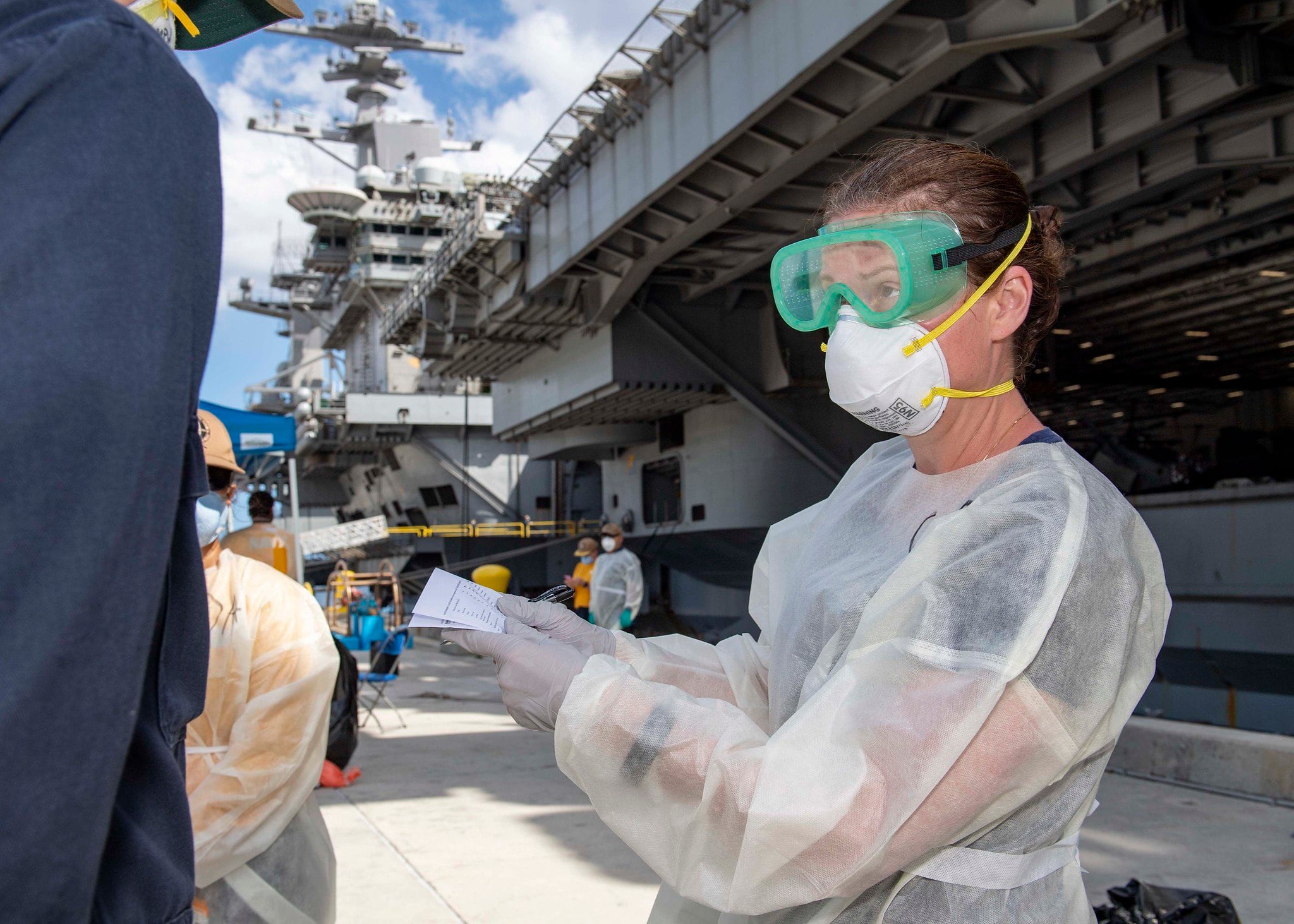More than 2,000 sailors have contracted coronavirus, according to Defense Department data, accounting for 42 percent of the military’s cases.
The services added 208 diagnoses over the weekend, for an increase of over 4 percent, totalling 4,912 cases in late February.
That number brings the infection rate among troops to 2,339-per-million, or just over 0.2 percent, compared 3,432-per-million, or over 0.3 percent, nationwide.
“The statistics show that the safest place to be is aboard a deployed Navy ship,” Defense Secretary Mark Esper said Monday during a Brookings Institution webinar, citing two out of 94 ships underway with COVID-19 outbreaks.
In addition to a lower infection rate than the general public, Esper cited the low hospitalization and mortality rates in the military: 2 percent and 0.0004 percent, respectively. Of nearly 5,000 diagnoses, 99 have been hospitalized and 1,806 have recovered so far.
Though not all states are releasing their hospitalization numbers, the current U.S. mortality rate among diagnosed cases is nearly 6 percent.

Despite being the second biggest service, by about 150,000 troops, the the Navy has more than twice the numbers of the next hardest hit service. That is largely due to outbreaks on the aircraft carrier Theodore Roosevelt and destroyer Kidd, totaling more than 1,000 sailors and more than half of the service’s 2,062 cases as of Monday.
The Army is reporting 1,032 cases as of Monday, followed by the Marine Corps at 428 cases and the Air Force at 388. The National Guard is reporting 884 soldiers and airmen, hundreds of whom have tested positive since mobilizing in support of pandemic response efforts.
While DoD’s numbers have leveled off somewhat in the past week, cases among service members are continued to rise as asymptomatic troops are tested as part of a tiered plan.
Starting with nuclear deterrence and counter-terror units, testing will trickle down to deployed and forward-deployed forces over the next few months. The goal is to eventually be able to test 60,000 troops a day, but senior leadership have not been able to detail the plan to get there.
“We believe we have the capacity right now to do the testing that’s requested,” Pentagon spokesman Jonathan Hoffman told Miilitary Times on Friday.
Testing will be part of an shift in the way the military operates, clearing units before movements for training or deployment.
“There will be a new normal that we will have to adapt to for an extended period of time — at least until we have a vaccine that we feel confident in,” Esper said Monday.
In total, the Defense Department has reported 7,434 COVID-19 cases.
Civilians make up the second largest chunk of those, with 1,207 total. That number increased by 84 over the weekend, or 7 percent. Of those, 91 have been hospitalized, 399 have recovered and 14 have died, the highest mortality rate among the DoD’s four categories.
So far 884 dependents have been diagnosed, a decrease of three over the weekend after correcting reporting errors. Of those, 35 have been hospitalized, 403 have recovered and four have died.
Among contractors, 431 have tested positive for coronavirus, thought no new caes were diagnosed over the weekend. Of those, 61 have been hospitalized and 7 have died.
With 27 total deaths, a number that has held steady for over a week, DoD’s mortality rate is about 3 percent.
Meghann Myers is the Pentagon bureau chief at Military Times. She covers operations, policy, personnel, leadership and other issues affecting service members.




